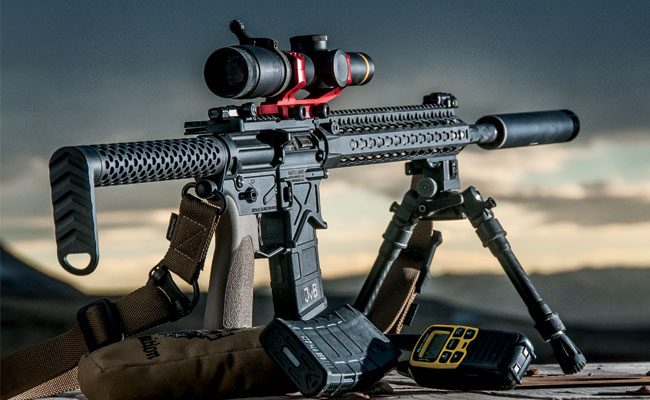I freely admit I'm a gun autist. There are certain things I like. Every piece of metal coated in something better than phosphate to prevent rust/wear. A supported tail bolt carrier to increase theoretical accuracy. CHF barrels give me the warm fuzzies, as does LW50 because it wears better than traditional stainless (allegedly). I like my AR builds to be tight as a tic without any rattle.
I'm also a mediocre shot. There's a reason I don't post groups here. I work 50+ hours a week and my days off are usually spent ticking off boxes on the hunny-do list. I don't have the time I'd like to get good. At least I admit it.
I have a pet theory about something that may (or may not, I'm an autist, not an engineer) increase accuracy (as Molon would say, technically precision) that I'd like to put out there for the Hide. Maybe one of you who does have the skills could test it and prove or disprove it.
Joe Carlos has data out there showing the efficacy of supported tail bolt carriers yielding an increase in potential precision and smaller group sizes. While he was at it, he also tested anti-tilt buffers. If memory serves, he didn't specify, but I believe he ordered it from slash buffers. He found it did not yield any increase in accuracy.
Here's where my theory kicks in. What if you combined the anti-tilt buffer with an anti-tilt buffer tube (along with a supported tail carrier like Lantac, SRC, Dirty Bird, Radian, etc)? The POF or PWS designs in particular come to mind.
The combination, in my mind, could remove enough of the slop in tolerance to possibly give better shot to shot consistency.
I could also see it negatively impacting reliability, but given that I long ago started as an AK guy, perhaps that's just unfounded paranoia.
In any case, perhaps one of you with the skill, time, resources, and also a touch of the 'tism can give this hairbrained idea a try. If it works, I've contributed something. If not, well, back to the drawing board.
I'm also a mediocre shot. There's a reason I don't post groups here. I work 50+ hours a week and my days off are usually spent ticking off boxes on the hunny-do list. I don't have the time I'd like to get good. At least I admit it.
I have a pet theory about something that may (or may not, I'm an autist, not an engineer) increase accuracy (as Molon would say, technically precision) that I'd like to put out there for the Hide. Maybe one of you who does have the skills could test it and prove or disprove it.
Joe Carlos has data out there showing the efficacy of supported tail bolt carriers yielding an increase in potential precision and smaller group sizes. While he was at it, he also tested anti-tilt buffers. If memory serves, he didn't specify, but I believe he ordered it from slash buffers. He found it did not yield any increase in accuracy.
Here's where my theory kicks in. What if you combined the anti-tilt buffer with an anti-tilt buffer tube (along with a supported tail carrier like Lantac, SRC, Dirty Bird, Radian, etc)? The POF or PWS designs in particular come to mind.
The combination, in my mind, could remove enough of the slop in tolerance to possibly give better shot to shot consistency.
I could also see it negatively impacting reliability, but given that I long ago started as an AK guy, perhaps that's just unfounded paranoia.
In any case, perhaps one of you with the skill, time, resources, and also a touch of the 'tism can give this hairbrained idea a try. If it works, I've contributed something. If not, well, back to the drawing board.


